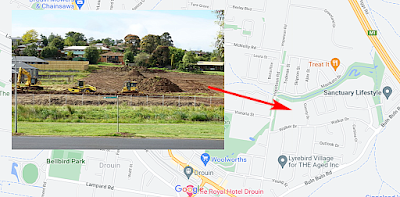This season, some of the Princes Way avenue of Ficifolias were beginning to flower in November. Now that most of the trees are in full bloom, the main gateway to our town is spectacular.
Sixty of these trees were planted by Drouin Primary School students in 1936 so they are now approaching 90 years of age. The trees are the inspiration for the annual Ficifolia Festival which began in 1989 and is held each February at the height of the blooming season.
The Ficifolia species is endemic to a small area of south-west WA but despite its restricted natural distribution, it is one of the most commonly planted trees in Australia.
In the mid to late 1800s, Ferdinand von Mueller described the species and named it Eucalyptus ficifolia. In 2009, DNA analyses placed the tree in the Corymbia genus and the species was renamed Corymbia ficifolia. Corymb = flat-topped flower cluster and ficfolia = fig-like leaf.
The Ficifolias in Princes Way are buzzing with bees and screeching with lorikeets and wattlebirds right now. There’s quite a show going on.
Musk Lorikeets are smaller than the more familiar Rainbow Lorikeet. They are just about all green with a bright red stripe through the eye and across the forehead. They are very nomadic as they chase the flowering eucalypts around the area.
Musks are very active feeders. They clamber through the foliage seeking the nectar and pollen from the freshest flowerheads, often hanging upside down to access the blossoms.
Like all our lorikeets and many other birds and mammals, Musk Lorikeets are reliant on tree hollows for nesting. Apparently, John Gould gave the name ‘musky parrakeet’ to the bird because of its peculiar musky odour (?).




